Champagne Portraits of Complex Functions
Lots of tiny bubbles.

Contents
Domain
The basic domain is the quadruple unit square,
$$\max{(|x|,|y|)} \le 1, \ z = x+iy $$
Colors
I could use the HSV colormap.
hsv_bubbles(@(z) z)
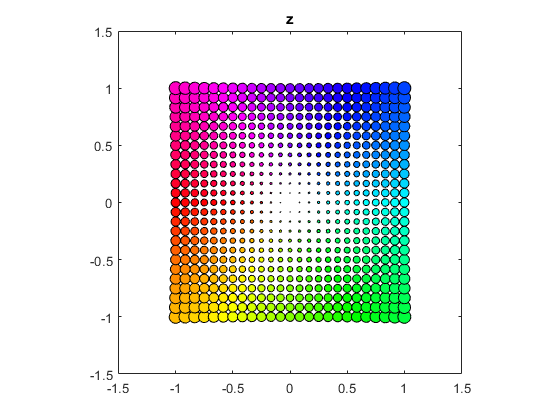
But I prefer "periodic parula", theparulacolormap concatenated with its reverse,[parula; flipud(parula)].
bubbles(@(z) z)

Powers
z^2
bubbles(@(z) z.^2)
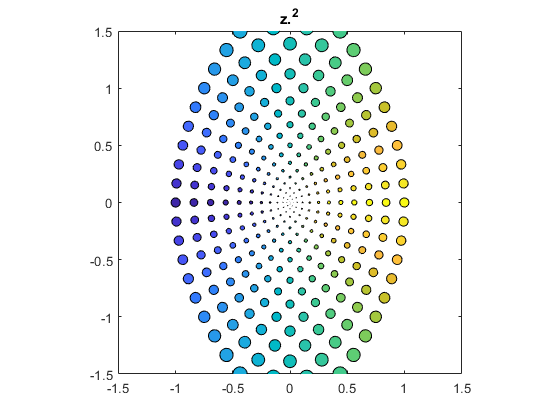
z^3
bubbles(@(z) z.^3)

z^9
bubbles(@(z) z.^9)

1/z
bubbles(@(z) 1./z)

sqrt(z)
A complex number has two square roots. One is in the right half plane.
bubbles(@sqrt)
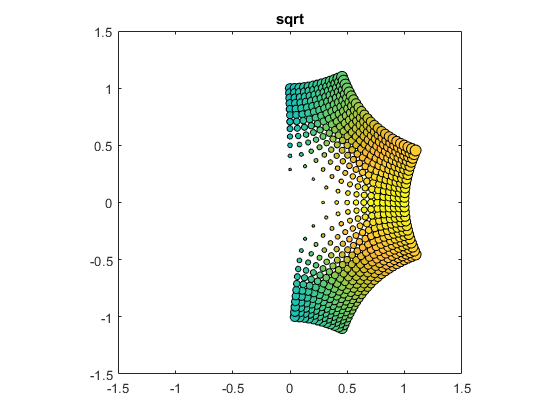
-sqrt(z)
And the other is in the left half plane.
bubbles(@(z) -sqrt(z))

Trig functions
sin(z)
bubbles(@sin)
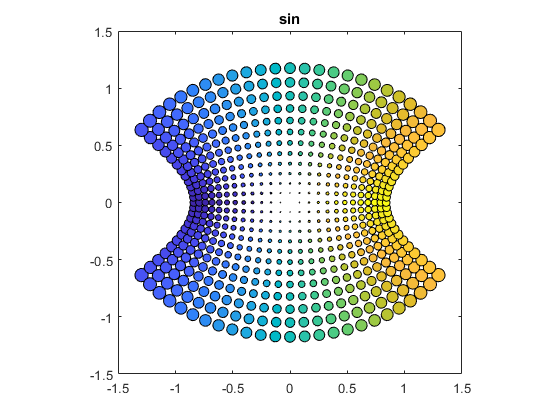
cos(z)
bubbles(@cos)
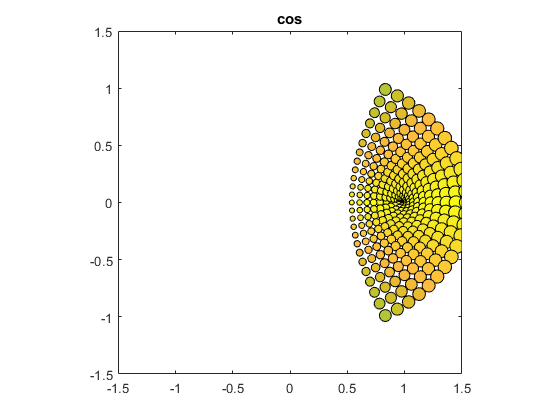
tan(z)
bubbles(@tan)
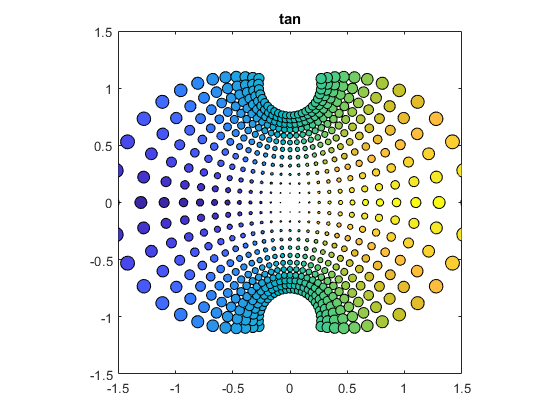
cot(z)
bubbles(@cot)

Exponentials
exp(z)
These polar angles are between -1 and +1 radian.
bubbles(@exp)

exp(pi*z)/exp(pi)
These fill out the entire complex plane.
bubbles(@(z) exp(pi*z)/exp(pi))
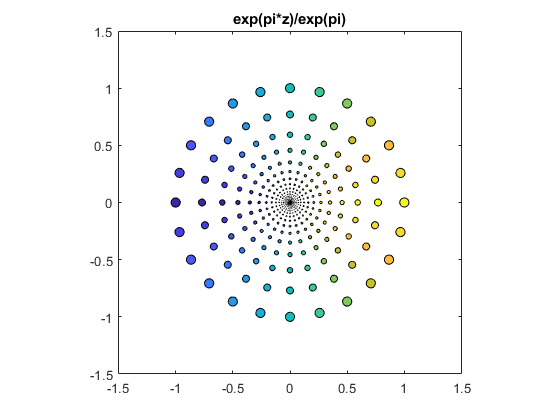
log(z)
bubbles(@log)

Polynomials and rationals
z^3 - z
bubbles(@(z) z.^3-z)
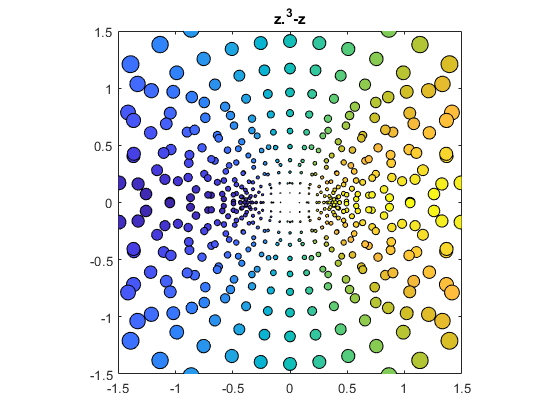
.5/(z^5-z/5)
bubbles(@(z) .5./(z.^5-z/5))
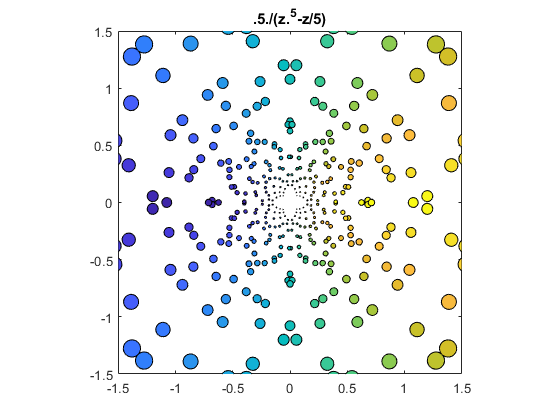
Essential singularity.
exp(-1/(8 z^2)
bubbles(@(z) exp(-1./(8*z.^2)))

Quiz
What is happening in the animation at the top of this post? If you think you know, or even if you just know part of the answer, submit a comment. I'll have some sort of prize for the first, or best, solution.
Code
Also available athttps://blogs.mathworks.com/cleve/files/bubbles.m.
typebubbles
function bubbles(F) % bubbles. Color portrait of complex-valued function F(z), % ex. bubbles(@sin) % bubbles(@(z) .5./(z.^5-z/5) ) if nargin < 1 F = @(z)z; end axis(1.5*[-1 1 -1 1]) axis square box on cla m = 256; colormap = [parula(m);flipud(parula(m))]; n = 25; s = -1:2/(n-1):1; [x,y] = meshgrid(s); z = x + y*1i; circle = exp((0:32)/16*pi*1i)/n; w = F(z); r = abs(w); theta = angle(w)+pi; scale = 20; for k = 1:n for j = 1:n t = m*theta(k,j)/pi/scale; idx = ceil(scale*t+realmin); color = colormap(idx,:); p = w(k,j) + r(k,j)*circle; patch(real(p),imag(p),color) end end titleF = char(F); if (titleF(1) == '@') titleF(1:4) = []; end title(titleF) snapnow end
- Category:
- Calculus,
- Color,
- Fun,
- Graphics,
- Special Functions














 克里夫的角落:克里夫硅藻土在数学和Computing
克里夫的角落:克里夫硅藻土在数学和Computing Loren on the Art of MATLAB
Loren on the Art of MATLAB Steve on Image Processing with MATLAB
Steve on Image Processing with MATLAB Guy on Simulink
Guy on Simulink Deep Learning
Deep Learning Developer Zone
Developer Zone Stuart’s MATLAB Videos
Stuart’s MATLAB Videos Behind the Headlines
Behind the Headlines File Exchange Pick of the Week
File Exchange Pick of the Week Hans on IoT
Hans on IoT Student Lounge
Student Lounge Startups, Accelerators, & Entrepreneurs
Startups, Accelerators, & Entrepreneurs MATLAB Community
MATLAB Community MATLAB ユーザーコミュニティー
MATLAB ユーザーコミュニティー

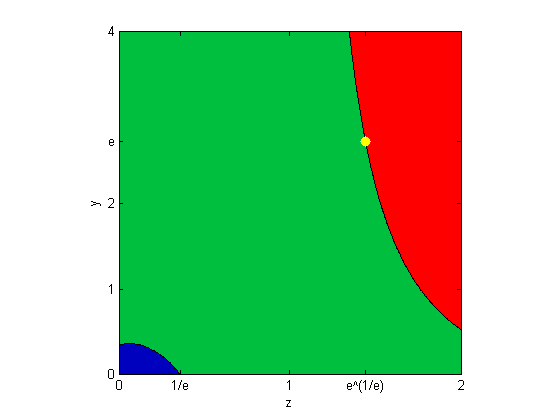




Comments
To leave a comment, please clickhereto sign in to your MathWorks Account or create a new one.